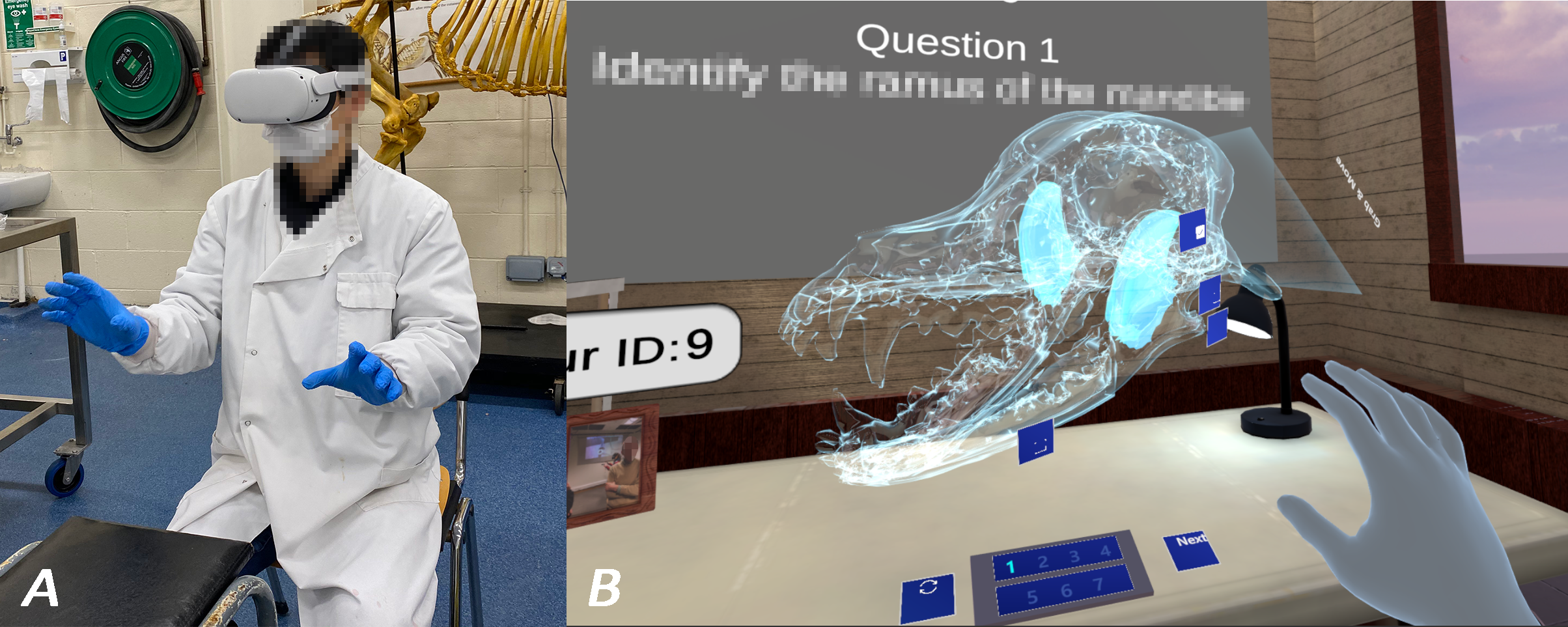Using HMD-based Hand Tracking Virtual Reality in Canine Anatomy Summative Assessment: a User Study
发表于 2022 IEEE International Symposium on Mixed and Augmented Reality (ISMAR), 2022
摘要
Due to the global pandemic, heavily practical based teaching in veterinary education has been hugely impacted. Even before the crisis, an innovative way to provide an assessment that could simulate the examination of a cadaver has been a long-standing dream for veterinary schools and faculty. We designed and implemented a summative assessment system using touchless interaction head-mounted display (HMD) Virtual Reality (VR), and presented a user study that was an initial exploration of the proposed system designed to replace traditional spatial multiple choices questions (MCQs) for veterinary students. The performance relating to the score and time spent of 24 veterinary students was measured in online MCQ and VR MCQ. Questionnaires were sent out to gather demographic data and opinions. Manipulation time in the VR environment was tracked. The results showed that the time spent was significantly shorter using VR as an assessment tool compared to online MCQ. Participants revealed that the VR assessment outperformed the traditional method in terms of satisfaction, distinctiveness, concentration, and nervousness levels. However, they underperformed in the VR examination significantly. The summative assessment in VR has the potential to further support veterinary education, and the usage of HMDs and touchless interaction will boost the process. This evaluation illustrates the gap between students’ perception of VR examination and their MCQ performance that will require future research to untangle if this technology is to be adopted in the anatomy classroom.
图片

引用建议
X. Xu, X. Pan, D. Kilroy, A. Kumar, E. Mangina and A. G. Campbell, “Using HMD-based Hand Tracking Virtual Reality in Canine Anatomy Summative Assessment: a User Study,” 2022 IEEE International Symposium on Mixed and Augmented Reality (ISMAR), Singapore, Singapore, 2022, pp. 287-296, doi: 10.1109/ISMAR55827.2022.00044.
